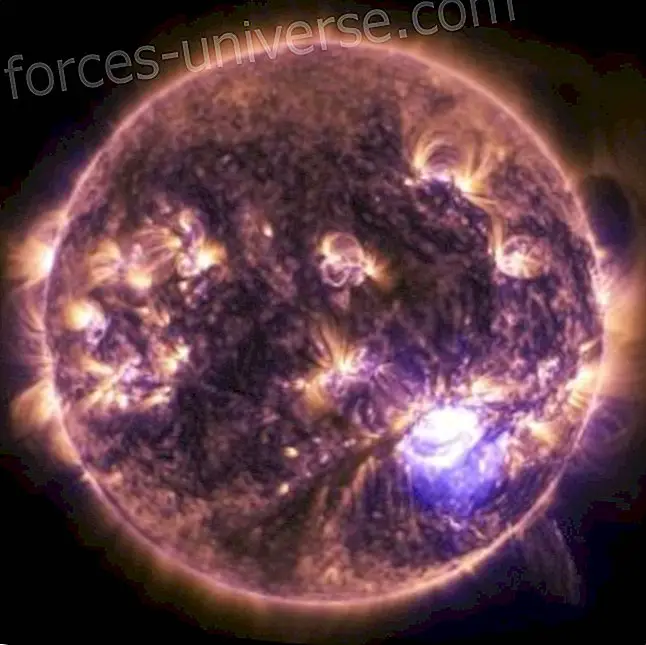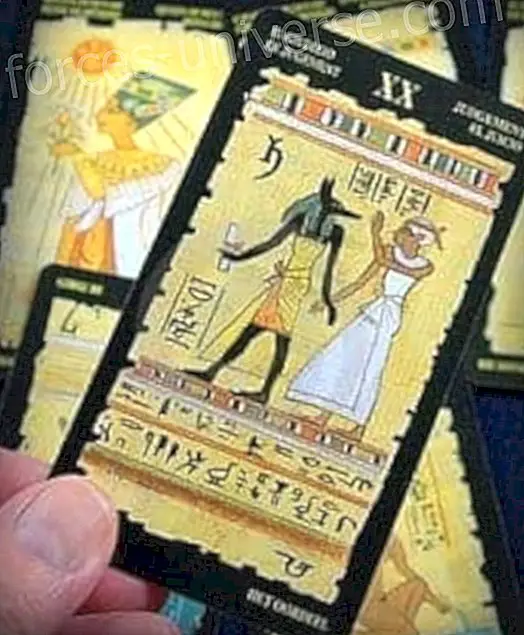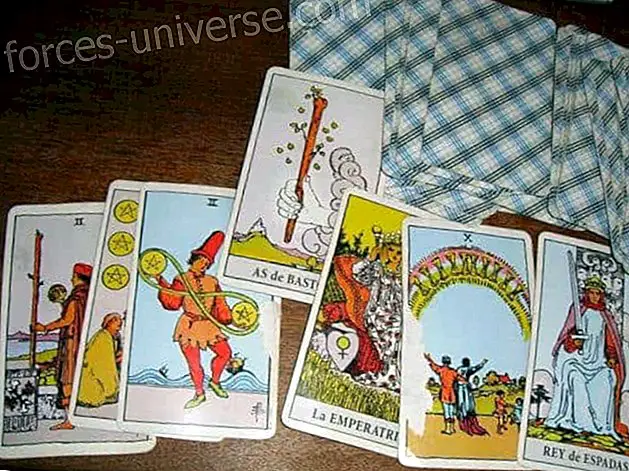
The human state stands on three conditions: the origin of its life, the continuity of that life, and the extinction of it. Everything is linked to the life that brings together the three primary conditioning. Other opinions affirm that the conditionings of the human state are life and mind, although in an extensive sense it can be considered that such qualities are also attributable to animal species, in the understanding that by mind not only intelligence but also intelligence should be involved. also the reason and even the most elementary components that allow animals to distinguish behaviors and select different behaviors depending on the reactions of the environment.
Despite what has been said, and understanding by mind all the manifestations of the psyche from the most weighted as the logical movement of reason to the simplest reaction by action of animals, we have chosen the study of the mind for what matters in itself and to reflect on it in comparison with the intelligence referred in a special way to consciousness. It is an understandable requirement to define precisely what could be designated as "mental function" in a very general sense with residence in the brain, distinguishing it from the "intellectual function" that resides in the heart. It is a dichotomy that in what is usually called Sophia Perennis is something quite well known and admitted its content, but that is an expression that is usually attributed to the Aristotelian-Thomistic line of thought by Catholic theologians as an exclusive expression of Christian theology. Since this wisdom is much older than Christian theology in its various aspects including Catholic, as is natural, we will use it knowing what we say and requesting that at best it be admitted to perennial wisdom as an expression of ownership human, without distinctions or exclusivisms for anyone.
In Chapter LXX of his work Fundamental Symbols of Sacred Science, René Guénon is pleased to transcribe some paragraphs of an article published in 1926 by Mrs. Th. Darel in the Magazine Vers l´Unité where this author shows a remarkable closeness of his thought with that of Guénon or, to be more precise, with the Primordial Tradition very neglected in the West. Obviously, we will not reproduce the selected paragraphs, but we cannot stop commenting on some praiseworthy phrases. Mrs. Darel considers that the brain is characteristic of the whole animal kingdom, while "the heart, by a secret aspir and expiration, allows man, remaining united to his God, to be living thought." To these reflections, Guénon adds a comment: “The seasoned reader will have discovered here the idea of the heart as the center of being”, adding that it is possible to “consider the heart and brain as two poles in the human being”. We will conclude with some of the best phrases in Mrs. Darel's article, as when she says: “In man, the centrifugal force has as an organ the brain, the centripetal force, the heart. "The heart is, in our opinion, the seat and the conservative of cosmic life."
This transfer from the brain to the heart of the most prominent and noble aspect of the human condition can be surprising for many and disappointing for many more because, among other things, it is necessary to review certain truths born of romantic sentimentalism that makes true intellectual efforts to maintain that Feelings are cradled in the heart and among them, love, as the most important for human relationships and signs of solidarity. No one has been able to demonstrate with the help of the particular sciences that the heart is the residence of such feelings and in general of all that the human being is able to experience. Nor has it been demonstrated by intellectual works that at least give way to the possibility of an open discussion in that regard. However, on the day of lovers, hearts continue to be traversed by Cupid's dates. They are the indestructible myths that despite their falsity resist being collapsed by good sense, since in such a case it is idle to think of rational evidence.
In the same way that the heart is agitated in front of certain episodes of life, the brain also becomes obfuscated and ends with the usual “headaches” in the face of compromised situations of daily life and neither in one case nor in the other, such reactions purely physiological should serve to define in an irrefutable way what resides in the heart and what in the brain. An outburst is capable of producing a heart attack, and that is why we would not affirm that such sensations occur in the heart if the cause of the outburst was the rupture of a loving relationship, for example or saving a danger of death. Sometimes, the outburst produces a cerebral embolism which would allow to affirm that such effects are not characteristic of the heart but of the brain. As noted, neither in one case nor in the other can an inflexible rule be given because it is not yet demonstrable that feelings, including love, have their residence in the heart. When we say "unprovable" we mean the methods of the physical sciences and not the metaphysics.
The mind of man in its complexity is able to run, discern and perform logical operations of reason through the secret mechanisms of Creation that in this way has placed in man the quality of knowing through the discursive movement that does not reach animals as a genre. The specific difference of man, which separates him from his next genus composed of all animals, is like the definition of Arist teles, intelligence, an exclusively human faculty that allows us to know through the creation of concepts that result from a mental process that consists in abstracting from the entities their essential characteristics to formulate a basic, generic and comprehensive image of all entities of the same species; This is how rbol represents the image of root, trunk, branches, leaves, flower and fruits, which are characters that are present in all or almost all individual specimens of this species of beings from the so-called animal kingdom.
However, with these results of reason, man only knows the reality that surrounds him, that of his world which, as we have been emphasizing from the first lines until now, is it is a relative reality, even if the existence of the Advaita metaphysics was denied or if its validity was denied, we would continue to advocate the same idea: with reason the discovery of the universals; God, for example, the Absolute, the Eternal, the Infinite. For this, something more than logical reason is necessary. It requires a spiritual and intimate movement that opens the doors of being and directs from the heart its exclusive, intellectual functions of an intuitive nature or the experiential ones that allow that being to take the flight to the higher states where his individuality, apart from the contingent, restless and differentiated world, is confused with the placidity of indifference where the forms are erased to turn on the light of the Totality, which is, whether or not, the destiny of man after his puminous state.
It is wrong who supposes that the union with the Absolute consists of a massive gathering of souls perfectly differentiated by the characters of their individualities, because such a union is an experience between the individual being and God, where nothing there is more and nothing is left out. A loneliness desired as an immense space destined for the `` rest '' that demands a past existence imprisoned by the vital urgencies. Something similar - the deserved rest - that deep sleep gives us, during which all things, passions, pleasures and sufferings disappear and that is required as an imperative necessity. The human being dies earlier due to lack of sleep than to food. The fast of food can keep us alive much longer than the fast of sleep.
The Christians solved the problem simply and correctly. If we take into account the official icon of the Sacred Heart of Jesus, it is noted that the drops (usually three) that splash from his heart are three iod or iod, which is the tenth letter of the Hebrew alephbeto which, for the rest, is a sacred letter because double (above and below) it surrounds the letter vav or wav, the sixth of the alephbeto, and the three draw the first letter aleph, which is the more sacred and whose value is 26: ten every iod, and six the vav. In the icon of the Sacred Heart, the sacred perception of the Hebrew tradition is represented with some dissimulation, which, on the other hand, is not surprising if we consider that Jesus was born Jewish and eight days after birth, as the canons of that religion say, He was circumcised (Luke, II, 21 et seq.). That heart is also an analogy and therefore an inverse representation of the cave or grotto where oblations and other sacred celebrations are carried out, without excluding the initiatory ones. And as unequivocal signs of the hermetic meaning of the Heart of Jesus, it is usually figured as a sun with flaming rays (curvilinear) and light rays (rectilinear). That sun that radiates light and heat is the faithful representation of wisdom (light) and of life (heat).
The light of the Sacred Heart, following the teachings of the basic symbology of tradition is wisdom, and among all of them, Primordial Wisdom, whose source is divinity and from which all that man supposes created by him proceed. It is the wisdom that feeds the basic criteria of all religions and cultures of all ages, so it is not feasible for us to go astray if we are encouraged to seek the truth. Heat comes from the vital energy, which is another element of Creation, but wisdom comes from light, a different element but that both come together forming an airtight unit in the Heart of Jesus. It can be concluded, then, that it is in the heart of Jesus where wisdom resides because it is there where the sun's light rays are drawn straight; and it is also there that the vital energy that provides the heat of the sun with curvilinear rays that want to resemble those of a flame is housed. There is, therefore, a communion between divine wisdom that escapes the margins of the properly human, penetrating the field of non-duality, and the vital warmth that is rooted in the field of dualistic relative reality. Of the brain, not a word; Not even an allusion.
- - - º - - -
We have said, and not once, that "mind" has to be understood as a symbol and not as a place (the brain), where certain rational experiences have a place. Therefore, the mind as a symbol represents the most exclusive quality of the human being, because it distinguishes it as a species from the rest of the animal genus. They fit, therefore, in the mind as a symbol, the psyche, the logic, the reason, the thought, the conscience, the intuition, the intelligence, the experiences and even if you want, the spirit and the soul when you need to be evidenced of some way. Made this warning to avoid confusion, we will examine some references that are expressly made in the Upanishad of Hindu doctrine, especially in its cosmogony, as one of the most developed and archaic.
In the Hindu cosmogony we usually find many references to the mind and not all with the same meaning. If we read: “Death had a desire: That a second body be born from me. In this way he formed the Speech in his mind, becoming the seed in the year. Before that time there were no years. Speech took a year to form. When she was born, Death opened her mouth to swallow her. Then she shouted: "Bhan! "And thus the Speech was formed" (Brihad? Ranyaka Upanishad, I, 2, 4). It is the birth of the mind in the being since in the first desire what is formed is water (ka), but as it appeared when it was in adoration (arkate), water is called arkate. In the second desire of Death is when the mind is born and lodges in the body of being. Death in this context, as we explained earlier, means the Non-Being, the non-manifestation from which the multiple beings of the manifestation arise. The most excellent truths are that of the Vedas (which has the same root as the Latin word truth), and this is confirmed by the writing: “These are the three Vedas: Rig-veda is the word, Yagur-veda the mind and Sama -pout breath. These are the Devas, the ancestors and the men: the Devas are the word, the ancestors, the mind and the men are the breath.
As we have seen in other previous studies, the destiny of the individual being after the posthumous state depends on the behavior that he has carried in life, and such behavior at the time of death will be reflected in the route that will correspond to him: that of the Devas heading North, the route of the ancestors heading south, and that of men whose destiny is hell. The first two routes allow you to return to the land to finish resolving the actions that were left unfinished. As for the path of men, it also has a route back to earth, but with natures of lesser rank. From this upanishádico text it is agreed that the mind occupies a prominent place, but not the privileged one that is reserved for those who contemplate the Absolute, but that of charitable, sacrificed and religious beings, in whom Consciousness does not act but the rational and speculative
- - - º - - -
There were two kinds of descendants of Pragapati, the Devas and the Asuras. The Devas were the youngest and the Asuras, the oldest. In that fight the victory was decided on the part of the devas due to the intervention of the goddess Durg? who immediately began to free all the deities that the God of the Asuras had kidnapped depriving them of freedom. “When he freed the mind, it became the moon. The moon, after crossing the limits of death, shines in all its splendor. To those who know this, this deity leads him beyond the confines of death ”(Brihad? Ranyaka Upanishad, I, 3, 16). From these passages of scripture we must draw some conclusions. First, that the mind was unable to escape the evil kidnapping of the Asuras, and ran the same fate as the ear, speech, eye and other deities. It was when Death tried to swallow the vital breath and failed to be defeated by the goddess Durg ?. The vital breath that runs through the entire extension of being was the force that put a stop to the whims of the God of the Asuras facilitating Durg? His victory This demonstrates the fragility of the mind in the face of the vicissitudes of existence and especially of knowledge that, having relative character, is subject to error, not necessarily but randomly.
Another comment suggested by the previously transcribed passages is that when the mind was released by Durg ?, it became the moon to which, according to symbolic references made earlier, it is considered the rector of indirect knowledge or reflection, as it needs light of the sun to come alive. The light of the mind is the moonlight, which requires an external light source to become. This reflex knowledge comes to represent the dualistic, imprecise and proper knowledge of the relative reality that it knows through the discursive method, very old but perfected by the thought of classical Greece and that lasts until today in the West.
In case what was said so far was not enough, we will remember a text that is explicit as far as you can ask: “As the waters find their center in the sea, just as the touch is in the skin, all tastes in the tongue, all the smells in the nose, all the colors in the eye, all the sounds in the ear, all the precepts in the mind, all the knowledge in the heart, all the actions in the hands, all the movements in the feet, as well all the Vedas are in speech ”(Brihad? ranyaka Upanishad, II, 4, 9). All the precepts are in the mind and all the knowledge in the heart is now what we want to understand.
The mind runs with reason and stores in memory that consists of a reflection of the past, but always as knowledge of something; the heart knows with intelligence and escapes to the higher states of being with a direct capture of the object. In the same Upanishad in the Third Adhy? Ya, Ninth Brahamana, one reads repeatedly, like a hymn: “Only who knows that person whose abode is the seed, whose vision is the heart, whose mind is the light, the principle of every being is really its teacher ”, because the heart does not know with dualistic criteria as the mind, but it knows as a vision, directly in an act in which the inner experience acts.
It is said in this text that the mind is light because, in effect, light is symbolically knowledge, but vision is the heart. This vision should not be understood as the vision of the sensitive organ, since such interpretation would be meaningless. It is the direct vision of the Consciousness that allows a gnostic exercise of intelligence, be it with intuitive characteristics, be experiential. The light of the mind, on the other hand, does not mean here, only the rational knowledge that corresponds to its attributes, but that in a meaning of greater degree one wants to refer to the mind as a condition of the individual being, differentiating from others conditioning of species similar to those of the human state that share those of life, for example, but which suffer from a specifically human mind; such other beings may reason even minimally, but they can never intellect even the least.
When Sakalya asked about the deities in Brihad? Ranyaka Upanishad, III, 9, 25: “What is the deity of the West? Yagñavalkya replied: Varuna. “Where does Varuna dwell? In water. And where does the water dwell? In the seed. Sakalya then asked: And where does the seed dwell? Yagñavalkya replied: In the heart. Therefore they say that a son is like his father, who seems to have left his own heart, or made his own heart, for the seed dwells in the heart. ” In addition to the possibility of direct knowledge by experience or intellectual intuition, the heart is considered the center of being for its importance and functions, to such an extent that the writing gives it the condition of residence of the seed of being, where The paling nesis takes place and gives rise to the validity of the Chinese aphorism: I will survive in your thousands of descendants .
The intuitive uptake of the Absolute Reality in the advaita metaphysics leads to an indestructible assertion because it constitutes a unity with the act of capturing: it refers to the quality of that uptake, which is none other than the absolute truth, unlike the relative truth of dualistic metaphysics. The scripture says: Where does the Truth dwell? Yag avalkya replied: In the heart, for only from the heart do we say what is true; it is certainly there where the Truth dwells (Brihad? ranyaka Upanishad, II, 9, 26).
The heart is the center of the body and the seat of intelligence. In the mind, understood as resident in the brain, the rational knowledge that is stored by memory is generated, and where logic allows us to know worldly reality with discursive method, where the human being lives and from where it can, according to Hinduism, rise to the higher states until it perceives in a unit its own being and the Supreme Being. That communion or merger, or union of being with Being, is a metaphysical conception that runs through the flowing waters of civilizations and religious beliefs, without exception, although Sometimes it is hidden. Christianity would not be an exception and for that reason they do not cease to surprise Paul's words in his Epistle to the Corinthians (I), when he clearly states: Whoever is united with the Lord, it is with him the same Spirit (VI, 17). The first glimpses of a Christian metaphysics have been mercilessly demolished by the Council of Trent, preventing this sacred doctrine from building its perennial wisdom building and being constituted in its own right in the sacred dogma of the West. Without deepening or creativity, the dogmas of other religions sharpen their teeth.
With these brief references to doctrines that deserve all the respect generated by their arguments and the strength of their tradition several times millenary, we believe we have made it clear that it is the heart where intelligence lies, and the mind where the feelings and the power to carry out the discursive process of knowledge. We have missed mentioning studies of Sufism in which, in the same sense that we point out, Islam grants the heart the privilege of being the noble center of the human being, as other sacred doctrines of the East affirm. And do not say that in the West the truth is `` another '', because to be true it must necessarily be unique and valid for all or not be true.
Narciso Lu (Excerpted from Hermetic Magazine No. 42)
Seen in: The Amarna






